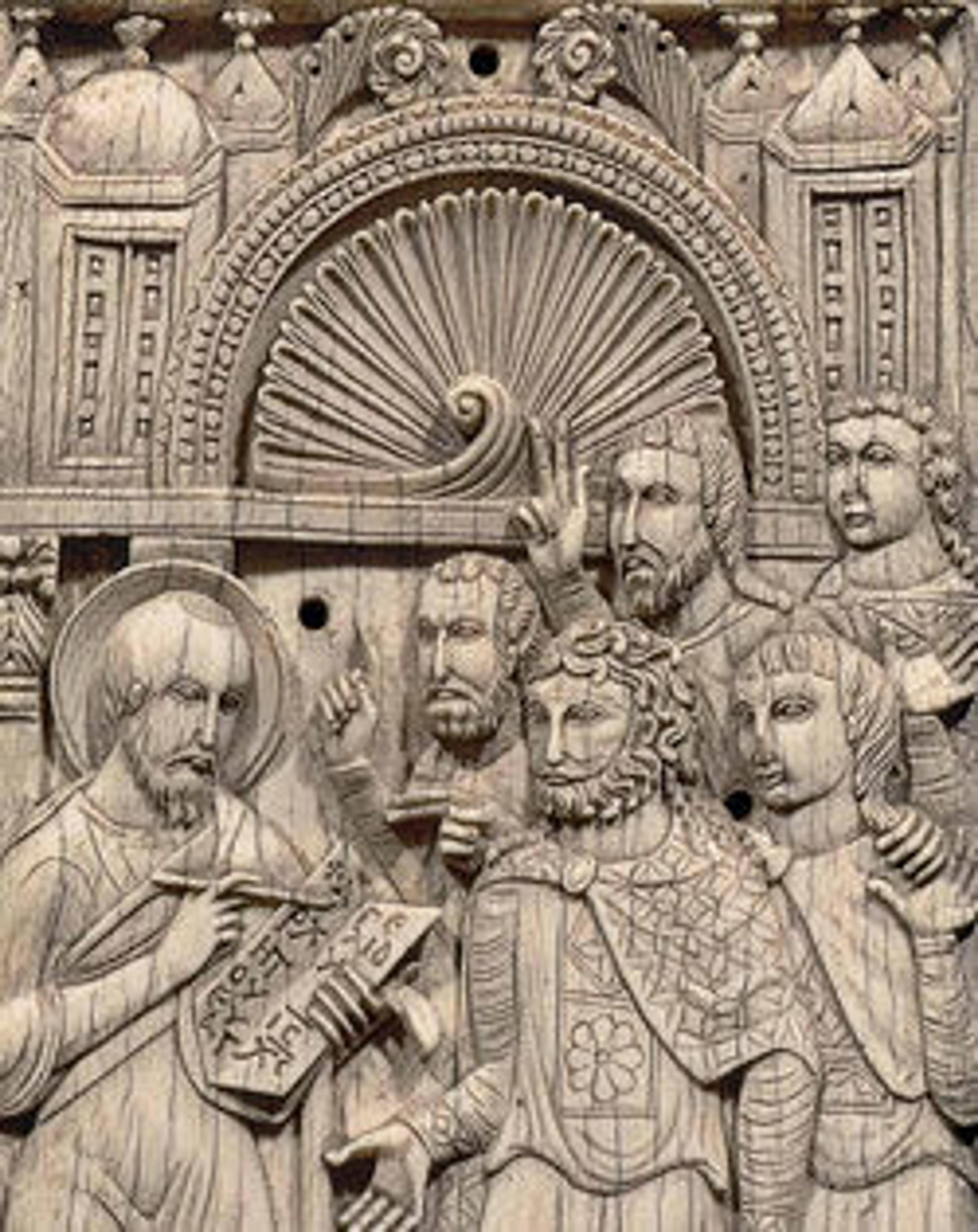Ewer with dancing females within arcades
Late Sasanian silver vessels, particularly bottles and ewers, often were decorated with female figures holding a variety of festal objects. The appearance of these motifs attests to the continuing influence of Greek imagery associated with the wine god Dionysus. On this silver-gilt vessel, floral arches, supported by low pilasters, frame four dancing female figures. Each holds a ceremonial object in either hand: grape and leaf branches, a vessel, a heart-shaped flower. Beneath one arcade, birds peck at fruit, and beneath another a tiny panther drinks from a ewer. Both the females and their decorative motifs recall representations of the maenads, attendants of Dionysus. However, it has been suggested that these figures have been adapted to the cult of the Iranian goddess Anahita. No texts survive to explain the appearance or function of these female figures, but it seems likely that vessels decorated with motifs such as these would have been intended to hold wine for court celebrations or religious festivals.
Artwork Details
- Title:Ewer with dancing females within arcades
- Period:Sasanian
- Date:ca. 6th–7th century CE
- Geography:Iran
- Culture:Sasanian
- Medium:Silver, mercury gilding
- Dimensions:H. of (a) 34 cm
- Credit Line:Purchase, Mr. and Mrs. C. Douglas Dillon Gift and Rogers Fund, 1967
- Object Number:67.10a, b
- Curatorial Department: Ancient West Asian Art
Audio
7022. Ewer with dancing females within arcades, Part 1
0:00
0:00
We're sorry, the transcript for this audio track is not available at this time. Please email info@metmuseum.org to request a transcript for this track.
Listen to more about this artwork
More Artwork
Research Resources
The Met provides unparalleled resources for research and welcomes an international community of students and scholars. The Met's Open Access API is where creators and researchers can connect to the The Met collection. Open Access data and public domain images are available for unrestricted commercial and noncommercial use without permission or fee.
To request images under copyright and other restrictions, please use this Image Request form.
Feedback
We continue to research and examine historical and cultural context for objects in The Met collection. If you have comments or questions about this object record, please contact us using the form below. The Museum looks forward to receiving your comments.
